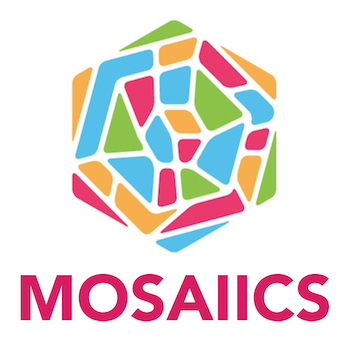Implementation of the methodologies for WP2 and WP3 will allow us to augment our results, and to 1) develop a new generation of data-driven models for electron and ion acceleration in large-scale coronal shocks; 2) for the first time, apply those models to compare the remote radio-based spectra to in situ electron spectra to be obtained with Solar Orbiter and Parker Solar Probe. This will ultimately allow us to improve our understanding of how, where, and when solar energetic particles are accelerated.
We will first develop and test the capability for electron acceleration modeling in CME shocks, extending the Kozarev & Schwadron (2016) proton DSA model. This will allow us to study in detail the dynamic processes leading to low frequency radio emissions during eruptive events by combining them with radio imaging observations. In addition, we will extend the model’s capability to accelerate heavier ions.
The heliospheric transport of solar energetic particles will be treated with the global, three-dimensional Energetic Particles Radiation Environment Model (EPREM; Schwadron et al. 2010, Kozarev et al. 2010) code. EPREM is a versatile, parallelized numerical kinetic model for the propagation and acceleration of energetic charged particles of solar origin in the heliosphere. It has been extensively validated on different problems of heliospheric charged particle acceleration and transport (Schwadron et al. 2010). It has also been successfully coupled to various global MHD solar wind models, such as ENLIL (Kozarev et al. 2010), SWMF (Kozarev et al. 2013), and CORHEL (Schwadron et al. 2015). The model accounts for particle streaming, adiabatic focusing, adiabatic heating and cooling, convection, pitch-angle scattering, and stochastic acceleration of charged particle distributions. EPREM calculates the diffusion coefficients based on the large-scale and fluctuating magnetic field components. Wave growth is controlled by a wave kinetic equation that is solved time-dependently on the entire simulation grid.
Using energetic particle models based on the EPREM particle acceleration and transport model and the DSA model of Kozarev & Schwadron (2016), we will relate for the first time the dynamic electron spectra observed in situ close to the Sun by PSP and SolO to the remote radio observations of LOFAR and MWA, bringing both an unprecedented new look at the sources and causes of traditional radio bursts, as well as understanding of the energization and transport of energetic electrons in the inner heliosphere early in solar eruptions. Furthermore, we will validate our data-driven DSA model against in situ proton and ion measurements from PSP and SolO. We will additionally apply EPREM to studies of interplanetary SEP propagation and validate the results against 1 au in situ measurements. For a description of the solar wind plasma, we will employ advanced 3D MHD models such as EUHFORIA (Pomoell & Poedts 2018). Finally, we will attempt to answer the question of what causes type II bursts to start and stop, by investigating the connection between coronal plasma and magnetic field conditions, shock acceleration of particles, and radio dynamic spectra and interferometric imaging. The work will be performed by myself, a postdoc, and a PhD student.
The MOSAIICS project is funded under contract KP-06-DV-8/18.12.2019 to the Institute of Astronomy and NAO, BAS, under the National Scientific Program “VIHREN” of the Bulgarian National Science Fund.
